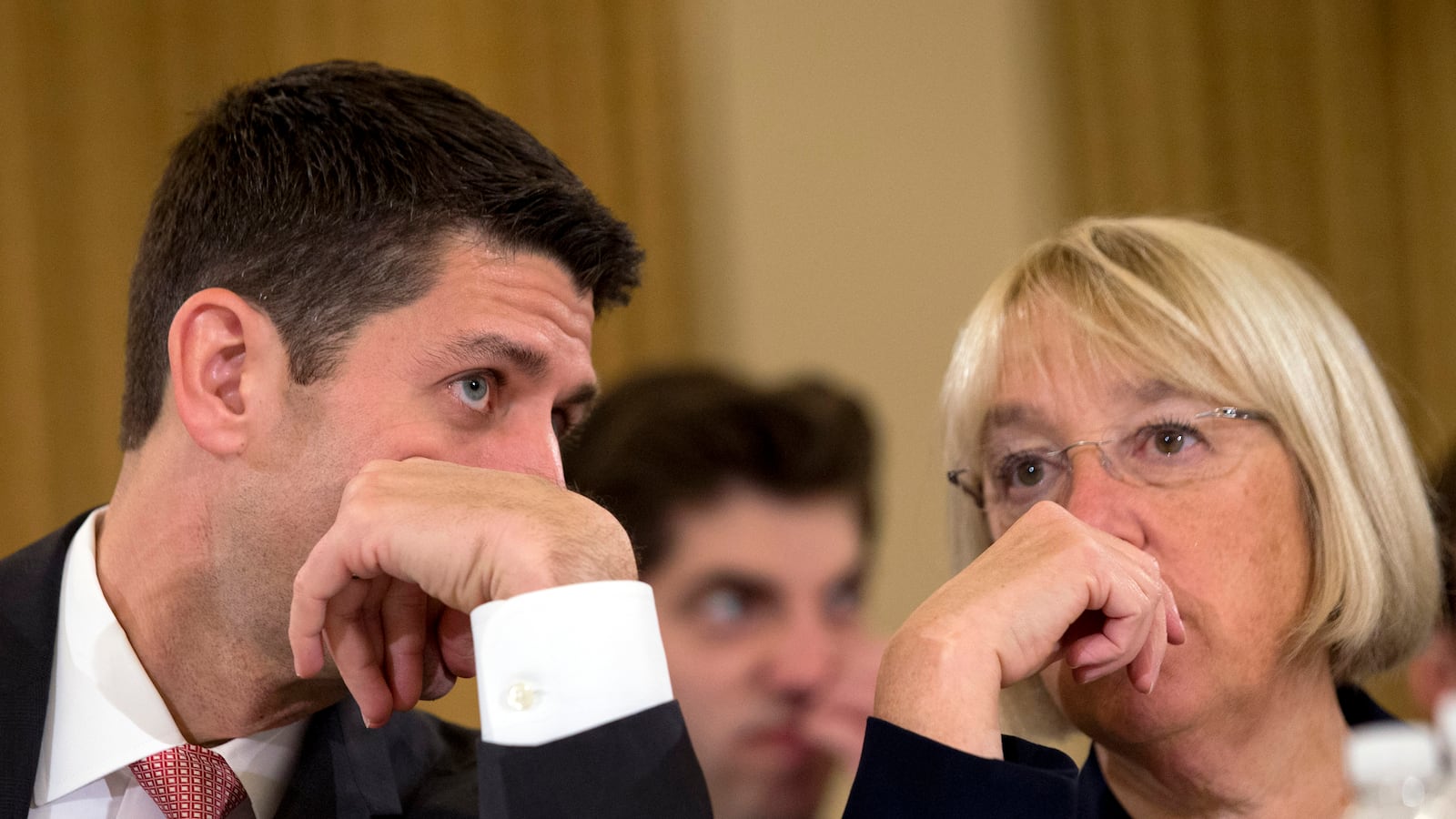With the deadline for a budget agreement rapidly approaching, there is none of the terrible thrashing and gnashing of teeth that typically accompanies an epic budget battle. Instead there is a wall of silence imposed by the chief House and Senate negotiators, Rep. Paul Ryan and Sen. Patty Murray.
Republicans aren’t talking because they have an understandable interest in keeping the public dialogue focused on Obamacare rather than anything that might trigger memories of the recent government shutdown. Democrats think, perhaps naively, they’ve got a better chance to reach a deal if they negotiate behind closed doors and keep the partisan mudslinging to a minimum.
Another reason for the reduced rancor is “budget fatigue to the point of desperation,” says William Galston, a senior fellow with the Brookings Institution. The conference committee charged with reconciling the House and Senate budgets hasn’t met for almost a month, but Ryan and Murray are said to be working well together despite polar opposite views. “And if they can reach a meeting of the minds, everybody will give a sigh of relief and move on,” says Galston.
The same impasse plagues this set of negotiations as it has others during the Obama administration. Republicans rule out new revenue sources, including closing loopholes in the tax code; Democrats won’t give on entitlement programs (Medicare, Medicaid, or Social Security) without GOP concessions. Both sides are searching past budgets for possible common ground. One potential area of agreement identified in both President Obama’s 2014 budget and in Ryan’s budget would increase retirement contributions from federal workers. Obama’s budget called for a 1.2 percent increase, a savings of $20 billion over 10 years; Ryan’s budget called for an increase of 5.5 percent and a savings of $132 billion over a decade. When these numbers were floated in The Hill newspaper, the outcry was predictable from lawmakers and unions representing federal workers: they shouldn’t be singled out to bear the burden.
Asked at Monday’s White House briefing what Obama was doing to stave off a possible government shutdown, press secretary Jay Carney replied, “It’s hard to imagine Republicans would want to go down that road again…We are continuing to negotiate in good faith and hope the Republicans who said they wouldn’t shut down the government meant it.”
The deadline to come up with a framework for a deal and what negotiators call a “top line number” is Friday, Dec. 13, the last day the House is scheduled to be in Washington before heading home for the holidays. If that date is breached, it really doesn’t matter because the real deadline is Jan. 15, 2014, when funding for the government runs out. The December goal is there because it would give appropriators time to write their bills and divvy up the funds Congress approves. If Ryan and Murray miss the deadlines but an agreement is within reach, Congress can pass a “continuing resolution” to keep government operating.
Both sides are wary of yet another round of brinkmanship and Galston puts the odds of another shutdown at zero. That’s the good news. The bad news is that both sides are signaling that a deal, if one is reached, would be small, a mini-bargain as opposed to a grand bargain. It would do little more than relax some of the sequester, the draconian across-the-board cuts imposed when Congress failed to agree on a budget two years ago. The House top-line number is $986 billion; the Senate number is $1.058 trillion, which is the level that Democrats and Republicans agreed to in the Budget Control Act of 2011 before the sequestration cuts were imposed.
If no deal is reached, the House’s $986 billion would be sequestered down to $967 billion. Sen. Murray’s goal is to replace as much of the sequester cuts as possible. Democrats have some leverage over the GOP because the next round of cuts takes a bigger bite from defense spending. Non-defense investments in education, infrastructure, and medical research would continue, but there would be an additional sequester on defense spending. “And that’s the hope,” says a Senate Democratic aide, “that this will be an incentive for Republicans. Many Republicans on Appropriations and on the defense committees are interested in making a deal. Democrats are worried about defense also, but not at the expense of ongoing cuts that are hurting families.”
Republicans could once be counted on to reflexively support and boost defense spending, but no more. “It is the single biggest change in the Republican Party in many years,” says Galston. The view has taken hold especially among Tea Party Republicans that defense is not sacrosanct, and that the Holy Grail is deficit reduction, letting spending cuts fall where they may. Part of the change is generational, with just 19 percent of lawmakers in office today having served in the military. “In living memory, that was three times as high,” says Galston
Appropriators are putting an enormous amount of pressure on Ryan and Murray to give them those top-line numbers. They can’t do anything until they know the amount of money they have to allocate. The sequester’s decrease is $1.2 trillion over 10 years, which means roughly $50 billion each year from domestic discretionary spending and $50 billion in defense cuts. Ryan and Murray at best are looking at a mini-bargain that would not be enough to undo the sequester even for the next year or two, let alone eight or nine. Whatever emerges from this political odd couple will be an austere budget, the question is how austere, and how much damage inflicted by Congress it can undo.






